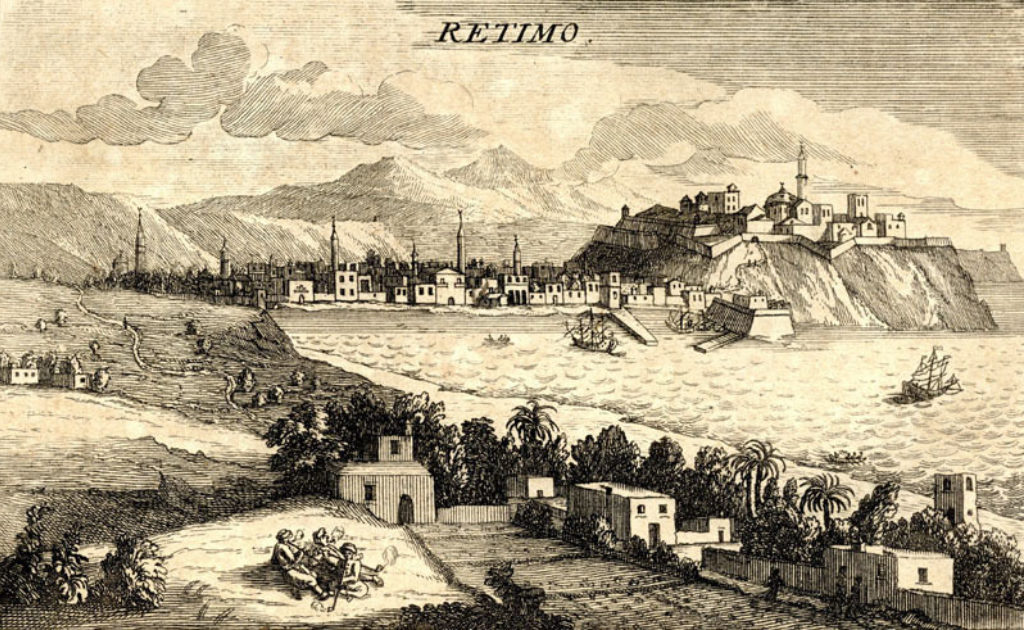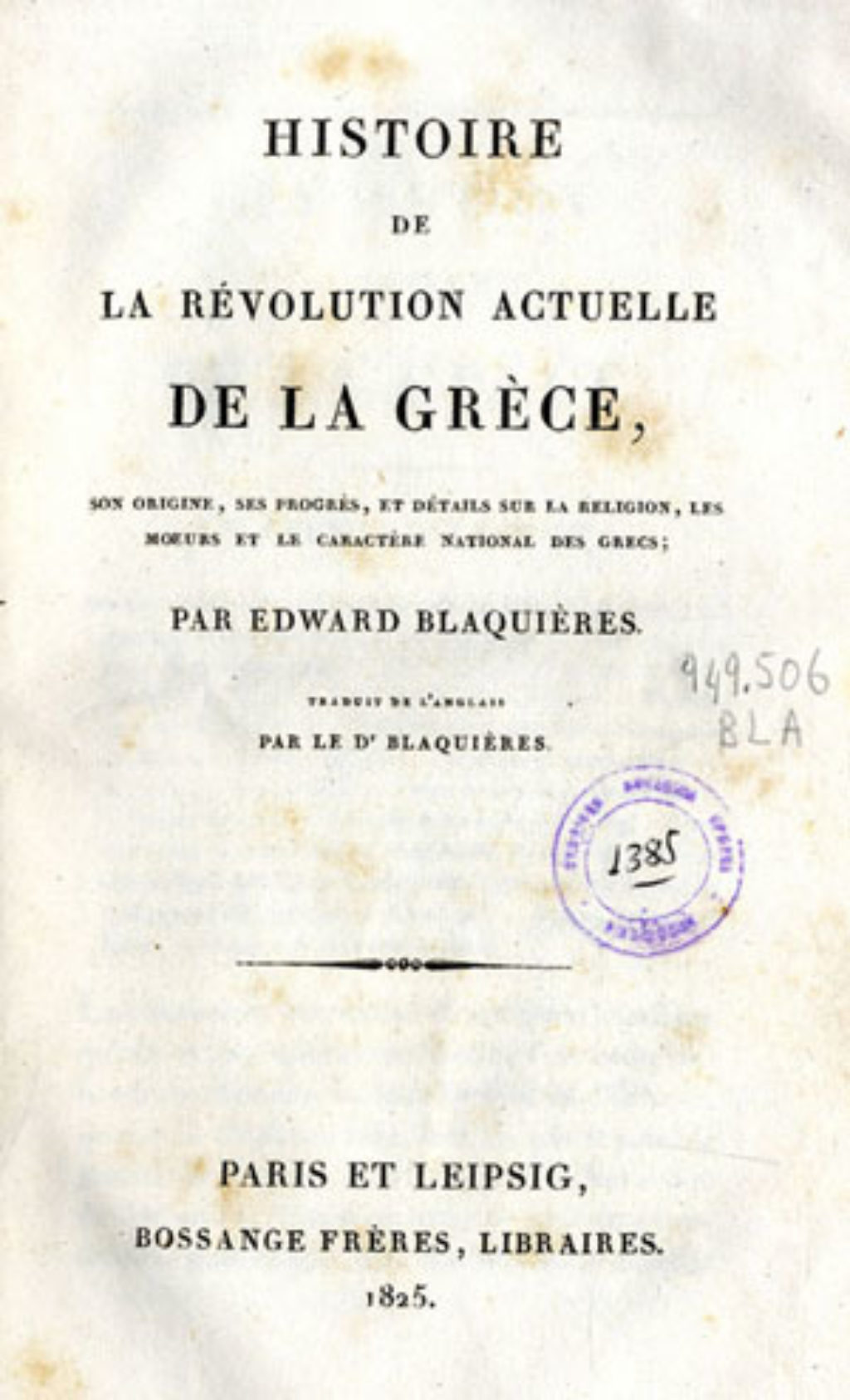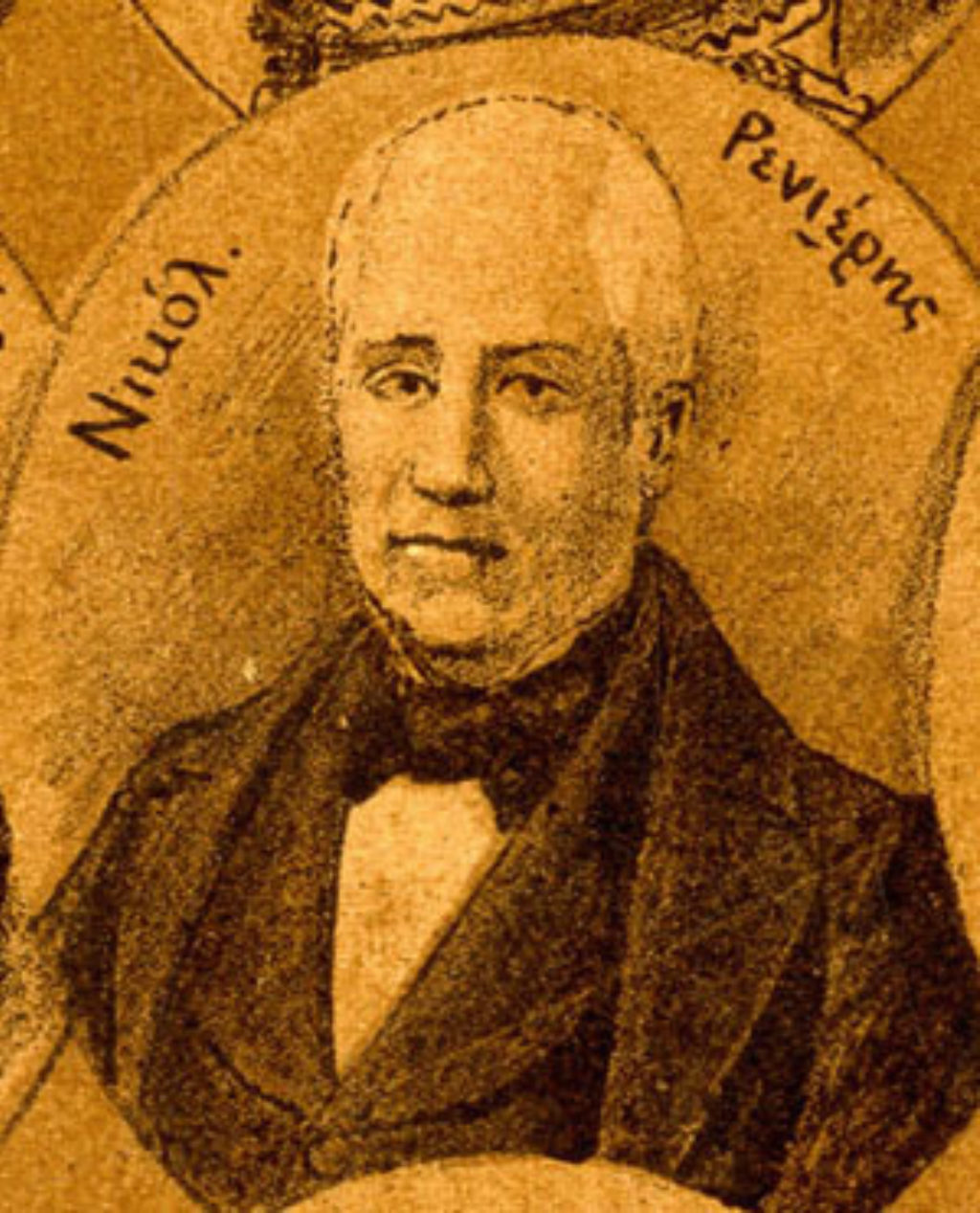PHILHELLENES AND OTHER REVOLUTIONARIES ON CRETE
The Unfortunate Joseph Balestra
The Unfortunate Joseph Balestra
Joseph Balestra had strong ties with Crete, as his father ran a trading company in Chania. As an officer he had served under Napoleon, while in 1814 he came to Crete and worked in his father’s business for a time. On the outbreak of the revolution he enlisted under Dimitrios Ypsilantis and, holding the rank of chiliarch, organised a regular military corps in Kalamata. Nevertheless, various Cretans prevailed upon him to return to Crete.
The first segment of Balestra’s group landed on the island in February 1822. On account of illness, he himself arrived in mid-March. Participating in assorted battles, Balestra planned a major operation aimed at taking the town of Rethymnon. In the course of the operation, however, the withdrawal of rebel leader Protopapadakis and his band led to the revolutionaries suffering defeat. In the panic that followed, the ill Balestra was unable to escape; he was taken prisoner and then beheaded by the Muslims.
Other Philhellenes
Other Philhellenes
Most of the Philhellenes who found themselves on Crete were members of Joseph Balestra’s group, such as the French captains Jostin de Rouen and Guilbert, and the Italian first lieutenants Isolani and Rossi. The same applies to Gradwoski and Koutselewski from Poland and the Berezansky brothers from Russia.
Very few references are made to other individuals. A small corps from Santorini under the Polish Jew Ioannis Dimitrios Leho was active on Crete in 1822, while the following year Frank Abney Hastings and John (Johann) Hane arrived on the island with Emmanuel Tombazis, though they left immediately after the events at Kandanos.
At the same time, in December 1823, mention is made of a German doctor named Schierreiter offering his services to the revolutionaries. Similarly, shortly after the fortress of Gramvousa was taken, the American doctors Samuel Howe and Jonathan Peckham Miller were sent to Crete in August 1825. The former remained on the island until October of the same year.
The Auxiliary Forces
References to the presence of armed men coming from areas outside Crete are encountered even before the revolution officially began on the island. Groups large and small arrived in a continuous stream, whether on their own initiative or recruited by Cretans, in what was a decisive contribution to establishing and consolidating the struggle. The Auxiliary corps, as they became known, fought in many of the notable battles over the first and second revolutionary periods (1821-1824), in both east and west Crete. Thanks to their members’ martial prowess and experience, their contribution was significant, and their losses were on a similar scale. Both the operation to take Gramvousa in 1825 and the resumption of the struggle in 1827 relied on such corps. No less substantial was the contribution of ships coming from the Aegean islands, which carried out raids on the shores of Crete, often in co-operation with the local revolutionaries.
Governor Kapodistrias’ Representatives
The particular military and diplomatic situation emerging in the third period of the revolution on Crete (1827-1830) called for the presence of a representative of the nascent Greek state. In July 1828 the post was initially filled by Friedrich Eduard von Rheineck, a man of Prussian descent. Following the instructions given to him, he attempted to maintain a moderate stance, encouraging negotiations between Christians and Muslims and thus incurring the displeasure of the local revolutionaries. In December of the same year, he was replaced by John (Johann) Hane, hitherto fortress commander at Gravmousa. Both more energetic and quicker-tempered, Hane had a hand in planning and carrying out two major operations against Chania and Rethymnon, without any success to speak of. His insistence on continuing the attacks and his overall behaviour provoked reactions, forcing him to withdraw to Gramvousa. In October 1829 he was replaced by the Cretan Nikolaos Renieris.



